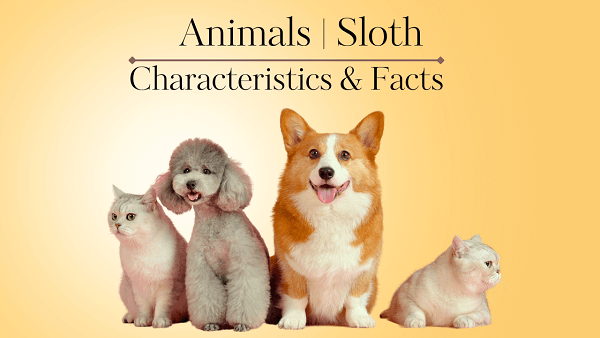
Sloth Definition | Characteristics & Facts
Sloth Definition
A sloth is a slow-moving, tree-dwelling mammal belonging to the suborder FolivoraSloths are known for their unique adaptations that allow them to spend most of their lives hanging upside down from tree branches. They are part of the order Pilosa, which also includes anteaters.
Sloth General Characteristics & Facts
General Characteristics of Sloths:
Slow Movements
Sloths are famously slow-moving creatures, and their name is derived from the word "sloth" in Middle English, meaning laziness.
Arboreal Lifestyle
Sloths are highly adapted to life in the trees. They are excellent climbers and spend the majority of their time hanging upside down from branches using their long claws. Their long arms and prehensile tail help them navigate through the forest canopy.
Nocturnal or Diurnal
Some species of sloths, like the two-toed sloths, are nocturnal, meaning they are primarily active at night. Other species, like the three-toed sloths, are diurnal, being most active during the day.
Herbivorous Diet
Sloths are herbivores, and their diet consists mainly of leaves, buds, and fruits. The leaves they consume provide limited energy, so they move slowly to conserve it.
Camouflage
The fur of sloths is often covered with algae, giving them a greenish tint that provides excellent camouflage in the trees. This algae-covered fur also helps them avoid detection by predators.
Low Body Temperature
Sloths have a lower body temperature compared to most other mammals. Their body temperature can drop significantly at night, further conserving energy.
Slow Reproduction
Sloths have a slow reproductive rate, with females typically giving birth to one baby sloth per year. The mother carries the baby on her belly or back until it becomes more independent.
Physical Characteristics of Sloth
Physical Characteristics of Sloths:
- Size: Sloths vary in size depending on the species, but they generally range from about 21 to 29 inches (53 to 74 centimeters) in length from head to tail.
- Weight: Sloths typically weigh between 8 to 20 pounds (3.6 to 9 kilograms), with some larger individuals reaching up to 30 pounds (13.6 kilograms).
- Fur: Sloths have thick, coarse fur that can be either brownish or grayish in color. The fur often hosts green algae, giving them a greenish tint, which provides camouflage in the trees.
- Long Limbs: Sloths have long, gangly limbs, with the front limbs being slightly longer than the hind limbs. Each limb has three or two elongated digits equipped with sharp claws.
- Prehensile Tail: Some sloth species, like the three-toed sloths, have a prehensile tail, meaning they can use it to grasp and hold onto branches, aiding in their arboreal lifestyle.
- Small Head: Sloths have small, round heads with large eyes and a short snout.
- Slow Movement: Sloths are famous for their incredibly slow movements. Their slow metabolism and deliberate actions allow them to conserve energy, making them well-adapted to their low-energy diet.
- Low Body Temperature: Sloths have a relatively low body temperature, which can drop even further at night when they are less active.
- No Front Teeth: Sloths lack front teeth in their upper jaw, which is a unique adaptation to their herbivorous diet of leaves.
- No Gallbladder: Sloths lack a gallbladder, which is uncommon among mammals. This adaptation allows them to process their fibrous diet more efficiently.
Continue To Explore All Animals That Start With S
Scientific Classification of Sloth
Kingdom: Animalia (Animals)
Phylum: Chordata (Chordates)
Class: Mammalia (Mammals)
Order: Pilosa (Pilosaurs)
Suborder: Folivora
View All A-Z Animals List
Sloth FAQs
What does Sloth eat?
Sloths are herbivorous animals with a diet that mainly consists of leaves, buds, and fruits.

